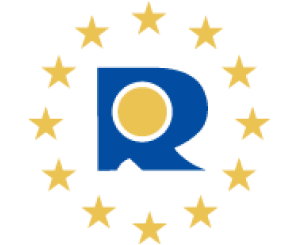Modernisation of the European Trade Mark System
– Frequently Asked Questions –
See also IP/13/287
I. Trade marks – the context
What is the function of a trade mark and why register your trade mark?
Legally speaking, a trade mark is a sign which serves to distinguish the goods and services of one organisation from those of another. Trade marks are words, logos, devices or other distinctive features which can be represented graphically. They can consist of, for example, the shape of goods, their packaging, sounds and smells.
Why register your trade mark?
A trade mark has three essential functions:
- it identifies the origin of goods and services
- it guarantees consistent quality by showing an organisation’s commitment to its users and consumers
- it is a form of communication, a basis for publicity and advertising.
A trade mark can become one of the most important assets of a company.
Trade mark registration is one of the strongest ways to defend a brand; a way to ensure that no one else uses it. If you do not register your trade mark, others may do so and acquire your rights to distinguish their goods and services.
Trade marks influence consumer decisions every day. A strong trade mark creates an identity, builds trust, distinguishes you from the competition, and makes communication between seller and buyer simpler.
How are trade marks protected in the European Union?
In Europe, trade marks can be registered at national level at the industrial property (IP) offices of Member States, or at EU level as a Community trade mark (CTM) at the Office for Harmonisation in the Internal Market (EUIPO) in Alicante. Under the overall system, national and Community trade marks coexist and the same sign may be registered as a Community and/or as a national trade mark. The CTM system consists of one single registration procedure which grants to its owner an exclusive right in the 28 Member States of the EU.
National trade mark registration in the EU Member States has been harmonised on the basis of the 1989 Directive and the unitary Community trade mark was created in 1994.
- The European Union trade mark legislation consists of the Trade Mark Directive (now codified as 2008/95/EC) and the Community Trade Mark Regulation (now codified as 207/2009/EC):
- The Directive ensures that national trade marks are subject to the same conditions when registered at Member States’ intellectual property offices and enjoy the same protection. – Alongside and linked to those national systems, the Regulation created the first EU-wide intellectual property right, the Community trade mark, which is granted by the EU Trade mark Agency, the Office for Harmonisation in the Internal Market (EUIPO), in Alicante, Spain.
Why do European (Community trade marks) and national trade marks coexist?
The principle of coexistence is fundamental for the effective and efficient functioning of a trade mark regime that meets the requirements of companies of different sizes, markets and geographical presence. While SMEs have become important users of the CTM system, they still regularly tend to prefer national systems because they usually don’t need their trade mark to be protected at EU level. Indeed, for SMEs and local companies, national trade marks would generally better meet their business needs. Moreover, while the CTM would be a natural choice for companies with activities on an EU scale, for those who may not obtain a CTM due to its unitary character, national trade marks provide the indispensable alternative. The existence of 27 trade mark registers, covering different geographical areas, increases the availability of and the opportunity for IP protection. Also, the limitation of the geographical scope diminishes the vulnerability of trade marks registered locally vis-à-vis subsequent applications inasmuch as any trade mark has to be genuinely used (in the relevant territory) to enjoy legal protection. Accordingly, the duality of the trade mark system in Europe offers users a number of choices.
How many trade marks are there in Europe?
- The demand for trade mark protection is high, as demonstrated by the filing statistics at national offices and EUIPO, as well as the number of trade marks in their registers:
- 544 000 trade mark applications per year (overall; 2012 figures):
- 108 000 CTM applications at EUIPO – 436 000 “national” trade mark applications at Member States’ IP offices
- 10,6 million trade marks in European registers (overall, May 2014):
- 11% of these Community trade marks (CTM) at EU agency in Alicante (EUIPO)
- 89% of these “national” trade marks at Member States’ IP offices
When can a trade mark NOT be registered?
- In general, the obstacles to trade mark registration are twofold:
- Absolute grounds for refusal: non-conformity with the trade mark definition, missing distinctiveness, purely descriptive nature etc.
- Relative grounds for refusal: existence of an earlier identical or similar trade mark.
II. What are the main reasons for change?
- National trade mark registration in the EU Member States was harmonised on the basis of the 1989 Directive and the unitary Community trade mark was created in 1994. Since then, there have not been any major modifications. The business environment, however, has changed significantly over the past two decades.
- The system is outdated (legislation has remained essentially unchanged since its adoption).
- The harmonisation effort has been limited (focused on a restrictive number of substantive rules), formal requirements and procedures left non-harmonised.
- There is inconsistency between the two legislative instruments, the Trade mark Directive and The Community Trade mark Regulation.
III. What are the components of the modernisation package?
The package contains three elements:
1. A recast of the 1989 Directive (now codified as 2008/95/EC) approximating the laws of the Member States relating to trade marks:
- At present, the Directive ensures that national trade marks are subject to the same conditions when registered at Member States’ Industrial Property offices and enjoy the same protection;
2. A revision of the 1994 Regulation (now codified as 207/2009/EC) on the Community trade mark:
- Alongside and linked to those national systems, the Regulation created the first EU-wide unitary IP right, the Community trade mark (CTM), which is granted by the EU trade mark Agency, the Office for Harmonisation in the Internal Market (EUIPO) in Alicante, Spain.
3. A revision of the 1995 Commission Regulation (2869/95) on the fees payable to EUIPO.
IV. What will the reform achieve?
Considered together as a package, the proposals pursue two main complementary objectives:
- to foster innovation and economic growth by making trade mark registration systems all over the EU more accessible and efficient for businesses in terms of lower costs and complexity, increased speed, greater predictability and legal security; and
- to ensure coexistence and complementarity between the trade mark systems, including greater cooperation between the EU trade mark Agency and national offices, with the purpose of converging office practices and developing common or connected databases and portals for consultation and search purposes.
The proposals do not aim at the creation of a new system but at a well-targeted modernisation of existing provisions, with the following aims:
- Streamlining and harmonising registration procedures, by introducing principal procedural rules into the Directive and taking the Union (CTM) system as a benchmark
- Modernising the existing provisions and increasing legal certainty, by amending outdated provisions, removing ambiguities, clarifying trade mark rights in terms of their scope and limitations and incorporating extensive case law of the Court of Justice
- Facilitating cooperation between the Member States’ offices and the EU Agency, by putting in place a legal framework for this cooperation, including a funding mechanism based on grants from EUIPO budget
- Improving the means to fight against counterfeit goods, in particular when they are in transit through the Union territory
- Adapting the texts to the terminology and procedures of the Lisbon Treaty (e.g. renaming the Community trade mark which will be called the European trade mark in the future) and to the inter-institutional Common Approach on decentralised agencies of July 2012 (e.g. new rules on governance of the EU agency)
- Making the fee structures more flexible to better meet the needs of users and adapting (reducing) accordingly the fees payable to the EU Agency (EUIPO).
V. Who will benefit from the reform and how?
The proposals will be beneficial for users of either trade mark regime in Europe, i.e. for applicants for and owners of both the EU (CTM) and national trade marks. It will improve access to trade mark protection for all companies, especially SMEs, regardless of their size, market and geographical presence.
As such, the package will contribute to increasing legal certainty, limiting the risk of litigation, and improving the level playing field for European business, thus enhancing the competitiveness and attractiveness of the EU internal market.
VI. How will the fees be affected?
Currently, at the EU Agency (EUIPO) and a number of Member States’ offices, a trade mark application can cover up to three classes of goods and services for the same (high) price. In the future, all offices in Europe should have a fee structure where a separate “class” fee is paid for each additional product class applied for beyond the first and not the third.
This new system will be tailor-made and clearly benefit SMEs who will no longer be obliged to pay for classes of goods and services they do not need. It will render trade mark protection cheaper and more accessible, as it will result in a proportionate decrease in both application and renewal fees. Moreover, it will reduce the potential congestion of trade mark registers by diminishing broad claims for goods and services not really required by the trade mark proprietor, and ensure a more balanced and harmonious trade mark system overall.
Based on its analysis in the impact assessment report, the Commission proposes a new fee structure for the EU Agency (EUIPO) – see table. The final fee levels will depend on discussions with the competent committee of experts from EU Member States.





